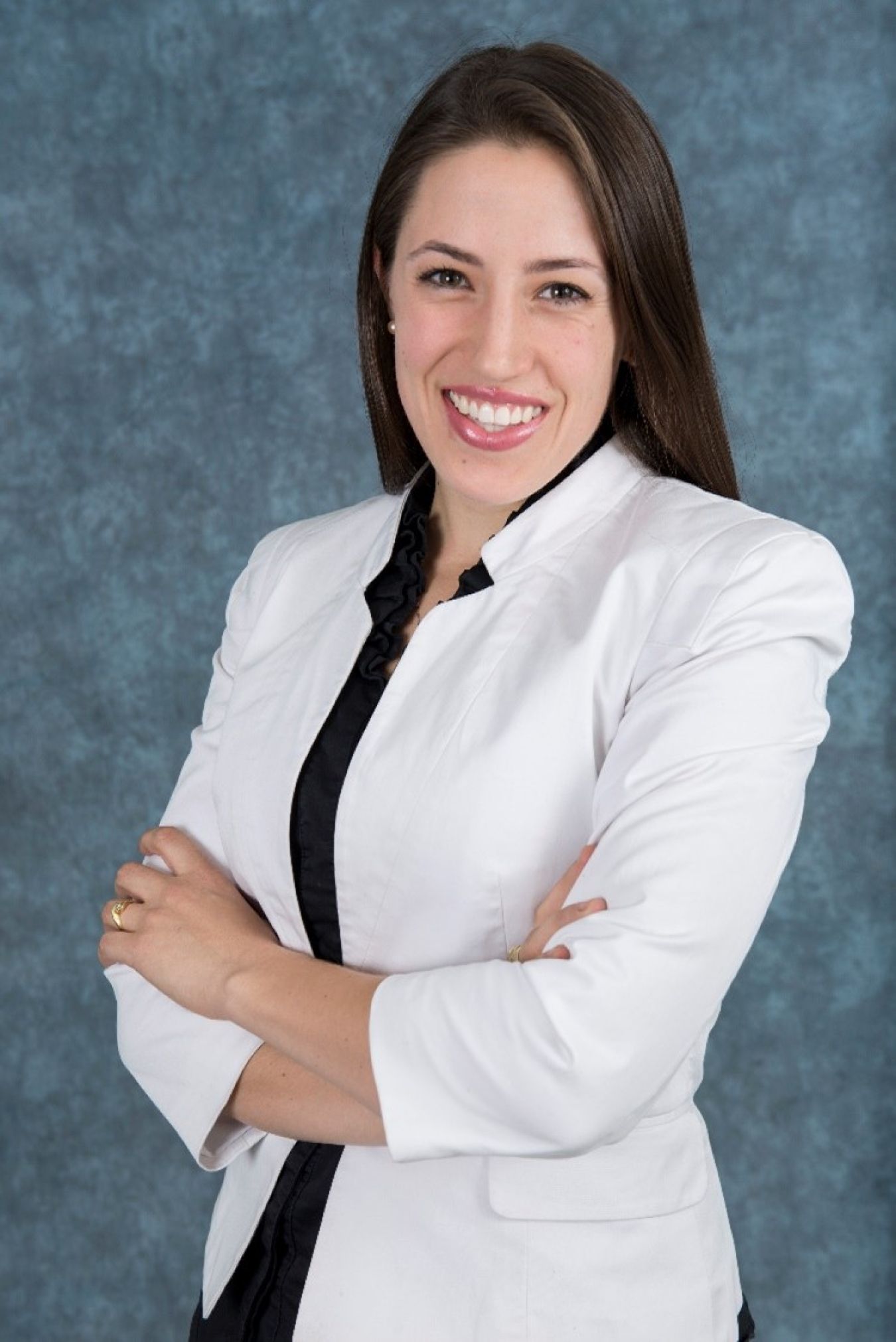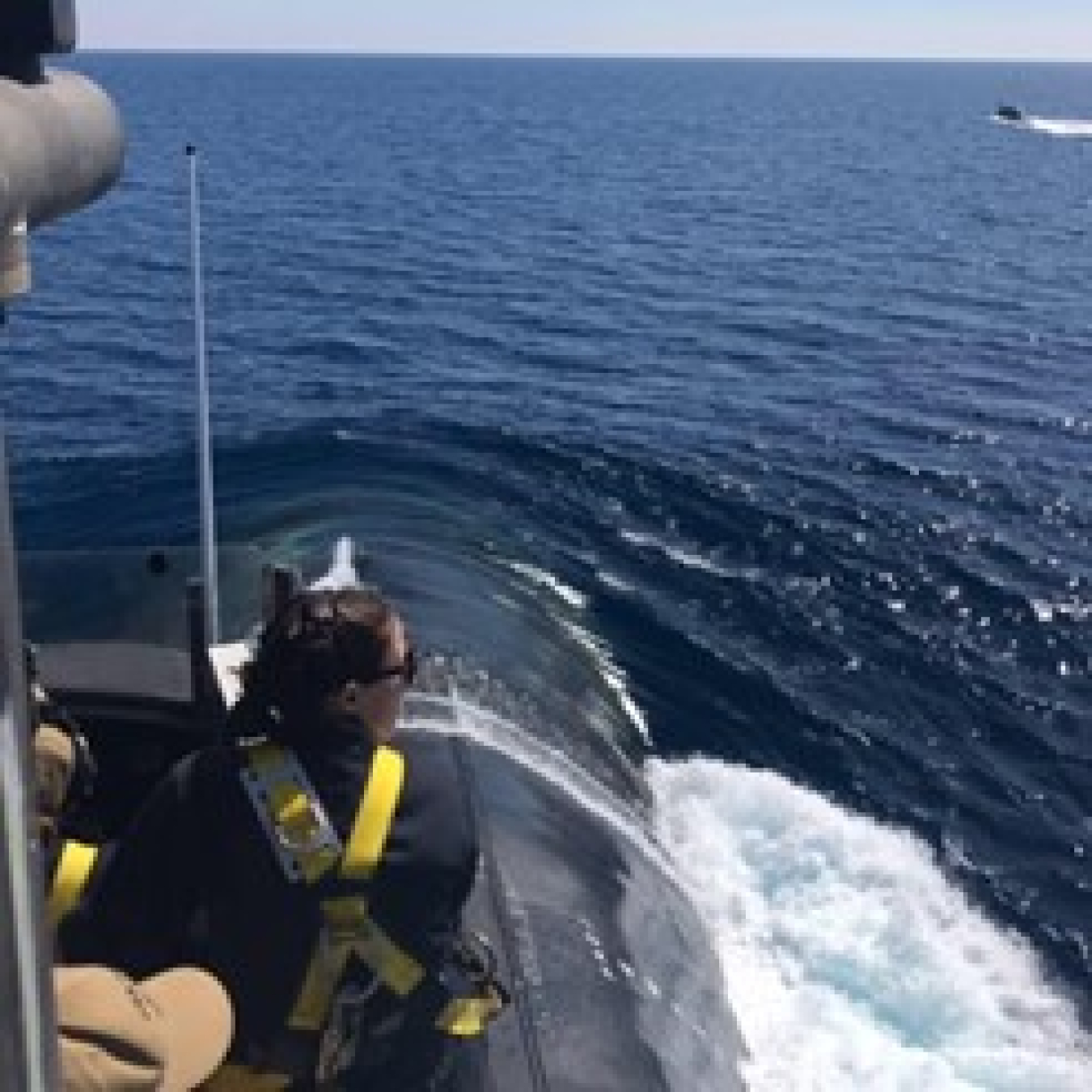From being part of the initial cohort of female officers serving onboard U.S. submarines to taking a plunge in the Antarctic Ocean; NNSA Defense Programs’ Erica Leinmiller is a cool person all around.
National Nuclear Security Administration
March 24, 2023
Describe your role in NNSA. What is the best part about your job?
I love getting to talk to a wide variety of people in the process of writing the annual Stockpile Stewardship and Management Plan– program managers, site representatives, infrastructure experts, budget professionals – and helping them think through long-term plans for the nuclear security enterprise.
Additionally, I work on several coordination initiatives for Defense Programs, such as implementing portfolio management best practices, updating our documentation of production mission assignments and the process for changing those assignments, and providing input to strategic planning initiatives.
What did you study in school and how did it impact you personally and professionally?
As a U.S. Naval Academy graduate, I have a Bachelor of Science in English, which meant about half of my coursework was science and engineering classes and the other half was literature, writing, or other liberal arts classes. This education is valuable because it showed me multiple ways of looking at the world. I understand the technical aspects of our work while recognizing the need to clearly communicate our mission and our plan for achieving it.
While studying for a master’s in public policy, during which I focused on international affairs and was involved with the Managing the Atom program at the Harvard Kennedy School, I gained a better understanding of deterrence, statistics, and negotiations, and learned how to concisely recommend a course of action based on extensive analysis. I’ve unexpectedly applied this learning to being a parent, where my understanding of unconscious bias and statistics has helped me recognize behavior patterns and interpret data on early childhood.
What led you to a career in nuclear security?
As a submarine officer, I spent about a year training on the Naval Nuclear Propulsion Program and then spent nearly three years onboard an operational SSGN where I stood watch in eight hour stretches in the reactor plant and managed the chemistry and radiological surveillance programs. When leaving active duty, I knew I wanted to stay involved in the nuclear field, whether power generation, weapons, or policy.
What’s one of your favorite things about working at NNSA?
Each day at NNSA I get to work with talented, intelligent people who are dedicated to a common mission. We face interesting challenges that require systems thinking and contribute to a field that has outsized influence on world affairs and great-power competition despite its only occasional mentions in the news.
What are the characteristics of the best teams you have been part of?
As the Officer of the Deck on a submarine, I was responsible for a team of fifteen people who worked together to drive the ship safely and to accomplish our mission, whether that was conducting surveillance, training to launch missiles, or transiting to a new location. At our team’s best, individuals were proficient at their roles and embraced continuous learning, and also understood the whole picture, which empowered them to provide backup to other team members.

Any advice for young women and girls interested in a career like yours?
Go for it! It’s easy to feel intimidated by unfamiliar acronyms, or the rigors of military life, or to feel like you don’t meet every single item in a job description. Apply anyway! Some of the most effective learning is done on the job. Prepare yourself well with a good understanding of basic physics, engineering, and chemistry.
What are your thoughts on women only make up a third of STEM workforce and studies?
When my mother graduated with a degree in computer science and math in 1983, she was one of very few women in her field, and the first at her company to be promoted to account executive. It’s harder to see yourself succeeding in STEM when there are no role models. Thirty years later, I was proud to be part of the initial cohort of female officers serving onboard U.S. submarines, and I looked up to the women three years ahead of me who were the first to integrate their crews. As an instructor at Submarine School, I enjoyed mentoring young officers by sharing my experience and connecting them with other women in submarines. I believe that at 20-30%, women are reaching a critical mass in STEM so that other girls and women can see themselves joining these important fields and can see themselves succeeding.
Who is a woman (or who are some women) that inspire/s you and why?
Emily Oster is an economist and professor who has carved out a niche for herself by applying rigorous statistical analysis to data about pregnancy, early childhood, and parenting. In her male-dominated field, colleagues looked at her topic choices with skepticism, but she found success in bringing data to inform discussions that previously relied on myth or intuition.
Tell us something interesting about yourself.
I’ve gone for a plunge in the Antarctic Ocean, and it is chilly! My husband and I took a cruise from Argentina to the Antarctic peninsula last year to commemorate the end of our time on active duty and to see birds that you can’t see anywhere else (like albatrosses and penguins). We developed a hobby for birdwatching over the pandemic, bringing binoculars on long walks in the woods and learning how to spot and hear various species.
I also like to brew beer – it’s science too!

